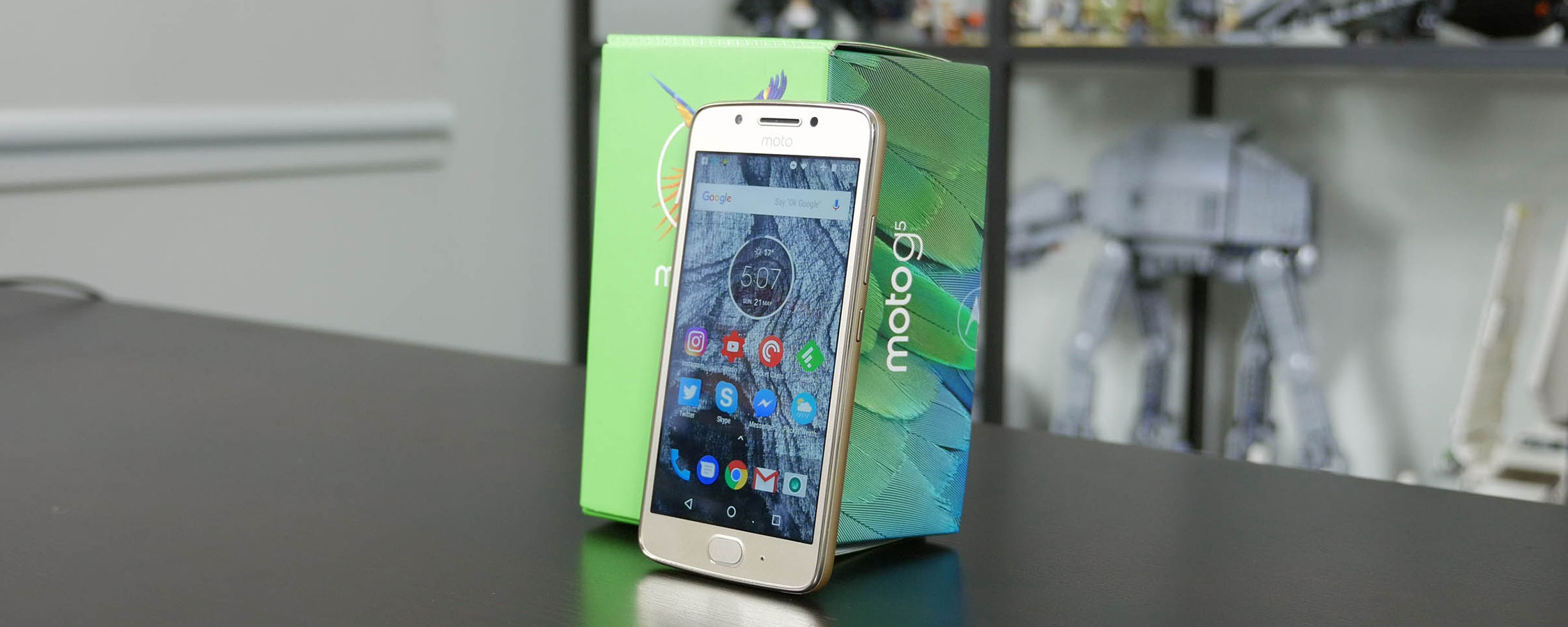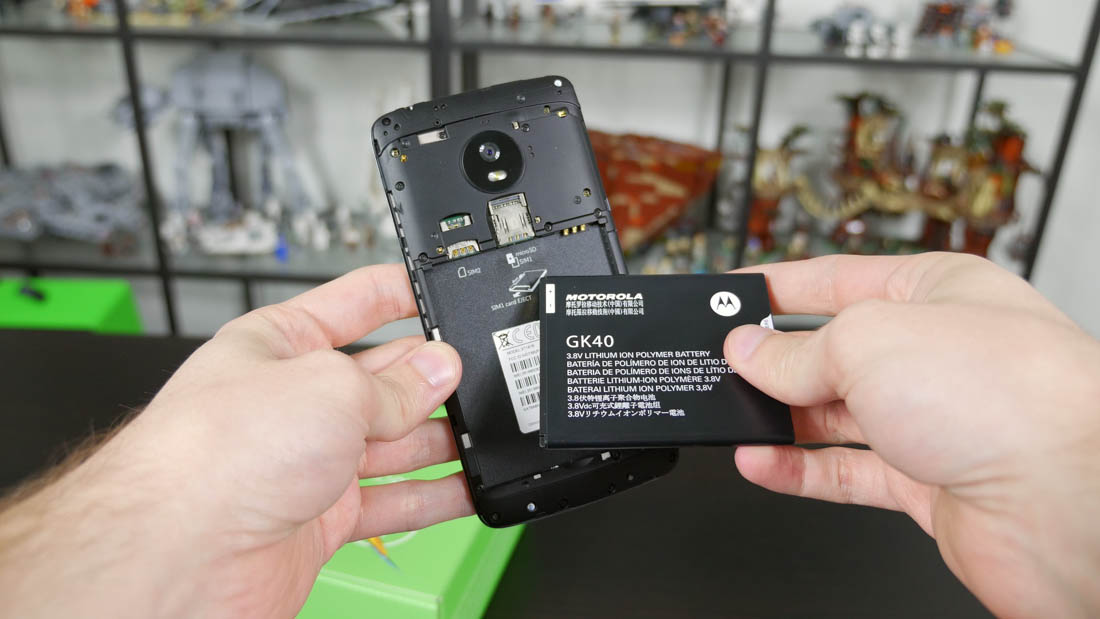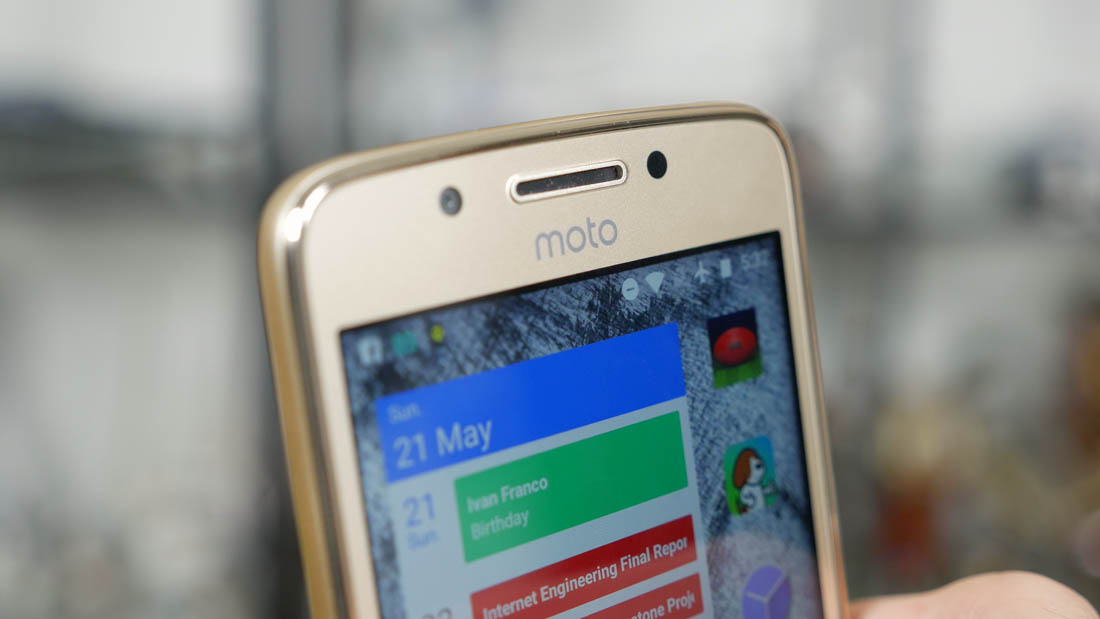I've recommended every iteration of the Moto G since it first launched four years ago. Motorola consistently nails it, producing excellent budget smartphones year after year. Most new Moto G phones are only minor upgrades on their predecessor, but with little improvements here and there, and an affordable price point, the Moto G line is hard to pass up.
For 2017, Motorola has launched the Moto G5 and Moto G5 Plus. The G5 is a typical budget handset, with features like a 5.0-inch 1080p display, 13-megapixel camera, and a Qualcomm Snapdragon 430 SoC. The G5 Plus ups the game, providing a slightly larger 5.2-inch display, a better 12-megapixel camera with dual-pixel autofocus, and a faster Snapdragon 625 SoC. Both phones are loaded with key features like fingerprint sensors, dual-SIM functionality, microSD card slots, and Android 7.0 out of the box.
For those in the United States, the Moto G5 Plus is the only phone officially available, priced at $229 for 2GB of RAM and 32GB of storage. That's cheaper than last year's Plus model, and you can shave the price down even further to $185 if you're willing to put up with Amazon ads. The Moto G5 is available in Europe for €199, which is around €80 cheaper than the Moto G5 Plus in that region.
I've been using both the Moto G5 and the Moto G5 Plus as my daily driver devices, at different times, for the past month. Both devices are hugely impressive for budget handsets once again, and I'd have no problem recommending them.
One of the biggest changes moving to the Moto G5 is its improved build. Motorola has ditched the chunky plastic body in favor of a part-metal chassis on both the G5 and G5 Plus, which gives it a more premium feel. The edges of the handsets are still plastic, but the rear is less curved than before, and features a metal panel. The G5 Plus has a slightly larger metal section than the G5, though I'm happy to see metal on both these budget handsets.
Let's be clear, though. Neither handset is going to rival top-end smartphones for design or feel. The Moto G5 is a big step up from previous iterations, but it still feels somewhat cheap to hold. There are numerous seams around the edges and rear of the handset, plus a glossy rim around the front panel. Motorola has room for improvement here to match some of the metal unibody budget handsets from Chinese OEMs. Or should I say, other Chinese OEMs now that Motorola is a division of Lenovo.
The front panel on both the G5 and G5 Plus is largely the same as the Moto G4, so we're still seeing large bezels. The G5 Plus is a few millimetres larger than the G5 to accommodate the 0.2-inch larger display, though the bezel size and design is practically identical. The good news here is the inclusion of a fingerprint sensor on the Moto G5, which was previously restricted to just the Plus model. The design of the sensor has been significantly improved - the G4 had an awful tiny square sensor - and works well in general.
One major difference between the G5 and the G5 Plus is the thickness. The G5 Plus is a slender 7.7mm thick and weighs 155 grams, while the G5 is 9.5mm thick and 145 grams heavy. This is mostly down to one key factor: the G5 has a removable back cover to facilitate the removable battery, while the G5 Plus has a sealed back and a non-removable battery. It's therefore no surprise that the Moto G5 Plus is a nicer phone to hold, even with the camera bump.
I'm not a huge fan of removable batteries, and the reasons for this are obvious when you look at the Moto G5 line. Not only is the Moto G5 thicker, it also has a smaller battery, at 2,800 mAh rather than 3,000 mAh.
This is entirely down to the extra housing that is required for the removable battery; it makes the phone thicker and reduces battery capacity. Some users will love the swappable battery on the G5, but the reality is you'd get a nicer form factor and more battery life without the feature.
Both phones support two SIM cards and a microSD card: the Moto G5 has these slots under the back cover, while the Moto G5 Plus uses a single tray. The G5 Plus is the only phone of the two that supports NFC, and some models of the Plus in some regions don't come with the feature anyway.
Motorola hasn't moved to USB Type-C on the Moto G5, so we're still seeing micro-USB here. This isn't surprising considering most USB-C accessories and cables cost more than their micro-USB counterparts, which increases the total cost for Moto G owners. Oh, and you get a 3.5mm audio jack on both phones, because Motorola isn't stupid.
There is a single speaker on both the G5 and G5 Plus, which is used as both an in-call speaker and a loudspeaker for watching videos and so forth. The quality isn't great, though it has a fair bit of volume to it, which can come in handy especially for calls.
I'll talk a bit about the software on both handsets here as well, because the G5 and G5 Plus both come with near-stock Android 7.0 implementations. I love stock Android, and it's great to see Motorola doesn't bother messing around with the already-great software provided by Google. One of the few additions is the Moto app, which provides additional gesture and display notification functionality.
Motorola says the G5 and G5 Plus will receive quarterly security updates, due to carrier and regulator restrictions in the EMEA region. They'd like to provide updates more frequently, but carriers and regulators are holding them back. My phones currently have the January security updates installed, so hopefully Motorola pushes out an update soon to update that.







